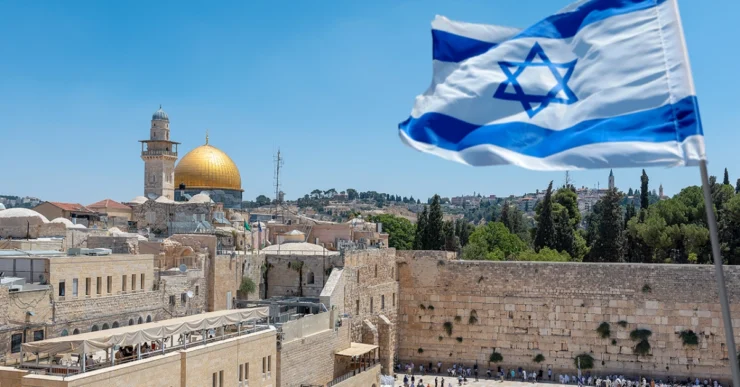The state of Israel is geographically located in Asia. The majority of its population is Jewish. The total area within its borders is 27.817 km². Located at the intersection of Asia and Africa, Israel is bordered by the Mediterranean Sea to the west, Lebanon and Syria to the north, Jordan to the east, Egypt and Palestine to the south.
It is under the influence of the Mediterranean climate. It is a geography that brings together people of various religions, cultures and social traditions. With the 43rd largest economy in the world, the country’s tourism is centered on faith. Jerusalem is frequented by many Muslims, Christians and Jews every year. The presence of religious buildings such as Al-Aqsa Mosque and the Wailing Wall in the country develops religious tourism.
Apart from this, the well-preserved and properly exhibited archaeological structures have brought the country to advanced levels in terms of tourism.
The city of Jerusalem, in particular, is where human history began and where all religions have their holy places. Destroyed and rebuilt 19 times in its 4,000-year history, Jerusalem, the city of doom and resurrection, is also known as the place where the Prophet Muhammad and Jesus Christ ascended to heaven.
On May 14, 1948, the establishment of the State of Israel was officially declared. For those who want to travel, there are direct flights to many cities in Israel.
Most of the places to visit in Israel are holy sites. For Muslims, Masjid al-Aqsa and the Dome of the Rock, the place where the Prophet Muhammad ascended to the Miraj, are the holiest sites in Jerusalem. For Jews, the Temple Mount in Jerusalem, where Abraham ascended to sacrifice his son to God, and the Wailing Wall, which reflects the suffering they endured for centuries while dreaming of statehood; for Christians, the cave in Bethlehem, Palestine, believed to be the birthplace of Jesus Christ, and the Sepulchre Church, where Jesus Christ is believed to have ascended to heaven after his death.
Other destinations include Eilat on the Red Sea coast for scuba diving tourism, Tel Aviv, Ashkelon and Haifa on the Mediterranean coast for beach vacations, and the Dead Sea for thermal tourism.
And of course the coexistence of different cultures is reflected in the diversity of cuisine. The flavors of countries such as Europe, Russia or Yemen are added to this. But it can be said that Israeli cuisine is generally Mediterranean and Middle Eastern in style. Israelis, like Turks, consume a lot of bread. They have spicy and sweet breads. The best known of these is the braided ‘khala’.
The breads they bake from unleavened dough are also famous. According to their belief, during the time of Pharaoh, the Jews had to leave Egypt in a hurry and did not have time to ferment the bread they were going to prepare for the journey. Unleavened bread is still eaten in memory of those days.
Here we will now briefly describe the must-see places in Israel.
Jerusalem
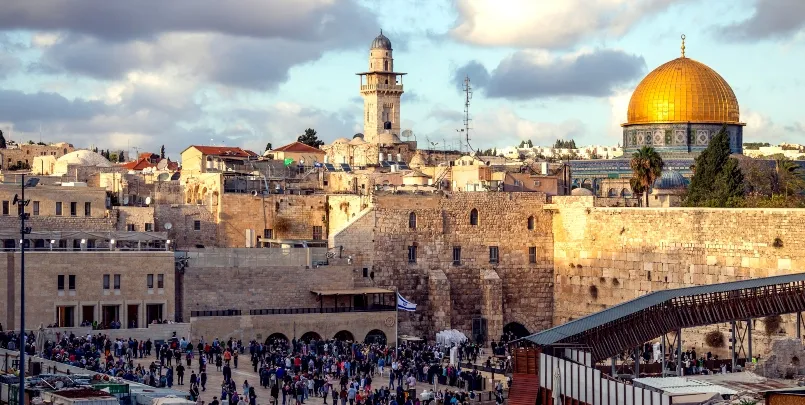


Built on a plateau of the Judah Mountains between the Mediterranean Sea and the Dead Sea, Jerusalem is considered a holy city for the Abrahamic religions of Judaism, Christianity and Islam. Today, Israel’s basic law recognizes Jerusalem as Israel’s “indivisible capital”. The international community does not recognize the recent occupation and recognizes East Jerusalem as the border of the Israeli-occupied State of Palestine.
Jerusalem is indeed a city like no other. Church bells mingle with the sound of the call to prayer and a rabbi appears from around the corner. There is no other city in the world that harbors 3 Abrahamic religions. The Temple Mount and the Western Wall (Wailing Wall), the holy place of the Jews, the Church of the Holy Sepulchre (Holy Resurrection – Church of the Resurrection), the holy place of the Christians, and the Masjid al-Aqsa, the holy place of the Muslims, are intertwined in a single city. The Old City of Jerusalem and its walls are a UNESCO World Heritage Site.
Dead Sea
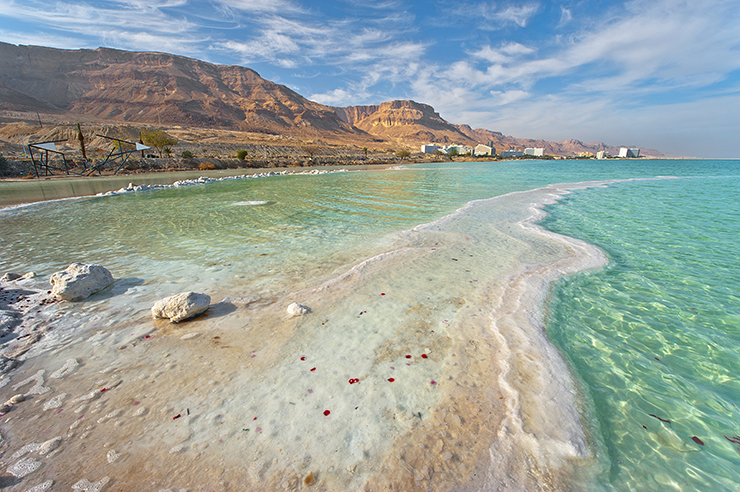


Bordered by Jordan to the east and Israel and the West Bank to the west, the Dead Sea, which is 422 meters below sea level, is the lowest lake in the world. The water of the Dead Sea, which is on the UNESCO World Cultural Heritage list, is so salty that you cannot sink while swimming.
The Wailing Wall
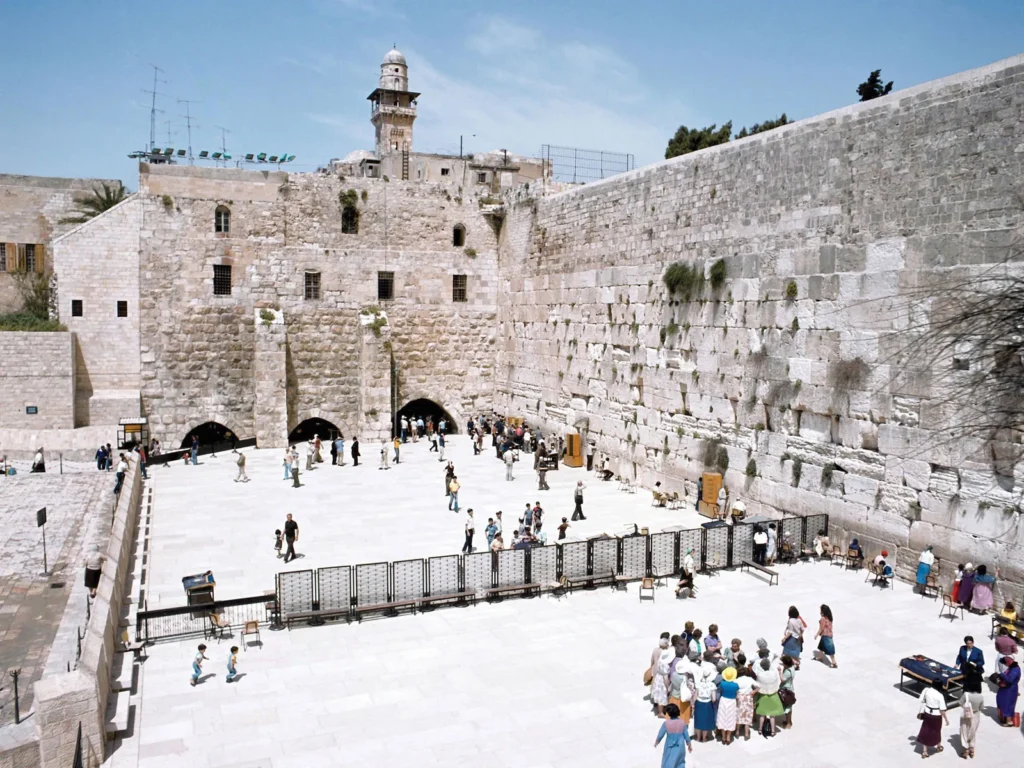


The Wailing Wall, a historic limestone wall in the Old City of Jerusalem, is also called the Western Wall because it is located on the west side of the Temple Mount. It is 488 meters long and 19 meters high.
The wall was built as a result of Herod the Great’s efforts to expand the Second Jewish Temple, resulting in a massive rectangular structure covering a flat platform at the top of a natural, steep hill known to Jews and Christians as the Temple Mount. This created plenty of space for the Temple itself and its ancillary buildings, as well as for the crowds of worshippers and visitors.
The Wailing Wall in Jerusalem, Israel, is a building of the Hebrew civilization.
Mount Masada Fortress
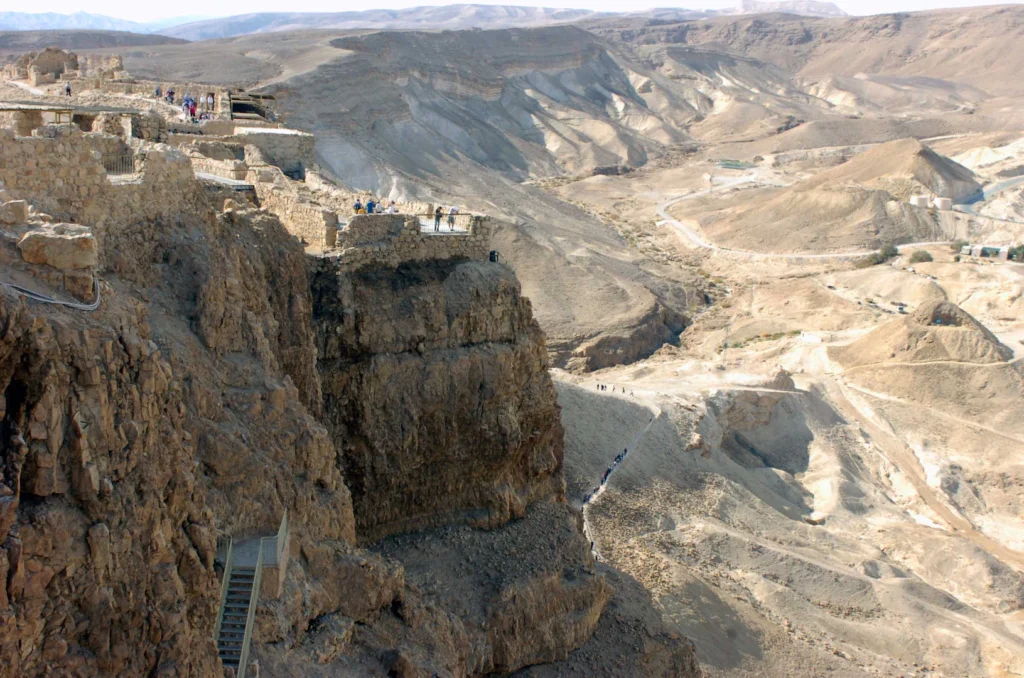


Masada Hill is located in southeastern Israel, between Ein Gedi and Sodom on the edge of the Najaf Desert. The 400-meter-high hill overlooking the Dead Sea is a UNESCO World Heritage Site.
According to legend, an extremist group of Jews called the Sicarii rebelled against Rome. Masada Hill, a natural fortress, became a refuge for these 967 Jews fleeing from Roman persecution and also served as a base for the rebel Jews to organize attacks against Roman troops.
When the Jews who took refuge on Masada Hill realized that they would be defeated by an overwhelming number of Roman soldiers, 10,000-15,000, they decided to die honorably. But since suicide is forbidden in the Jewish faith, they decided that a small group of them would kill everyone and then kill each other in turn. They destroyed all their belongings but left the food untouched. In this way, they wanted to show that they did not die out of necessity, that they preferred death to slavery. When Roman soldiers entered Masada, they found 967 dead bodies. The Israelites believe that the fall of Masada marked the beginning of a period of exile, captivity and humiliation that would last until the establishment of Greater Israel.
Tel Aviv
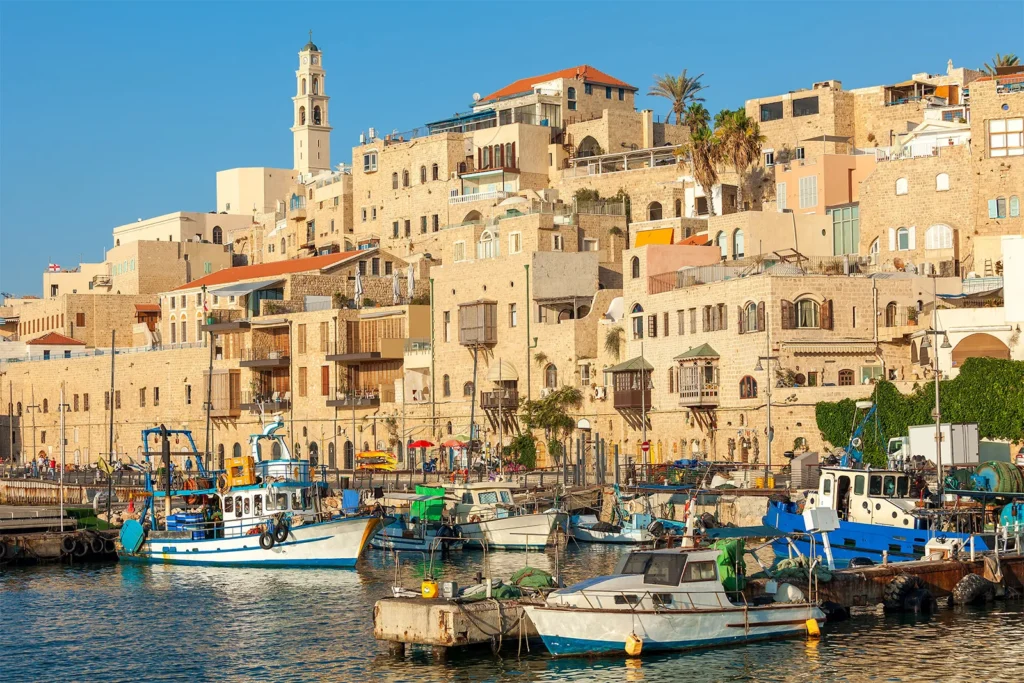


Tel Aviv was founded in 1909 adjacent to the port city of Jaffa. Over time, it grew and started to separate from Jaffa. Jaffa (Tel Aviv-Yafa), considered one of the oldest settlements in the world, is now considered part of the city of Tel Aviv. Jaffa was included in the UNESCO creative cities network for media arts.
Tel Aviv is known as the financial center of Israel. It is an extraordinary experience for travelers to watch the sunset on the magnificent coast full of beaches called Tayalet, to go to bars, restaurants, cafes, museums, theaters, concerts and nightlife in the city center. The White City, with around 4,000 buildings in the Bauhaus style, was built in the 1930s by German architects who immigrated to the British Mandate of Palestine after the Nazis in Germany gained power. It is on the UNESCO World Heritage list. The Jewish neighborhood of Neve Tzedek is a must-see with its colorful and interesting buildings. HaTachana, the old train station close to Neve Tzedek, is also a must-see with its chic boutiques and cozy cafes.
Haifa
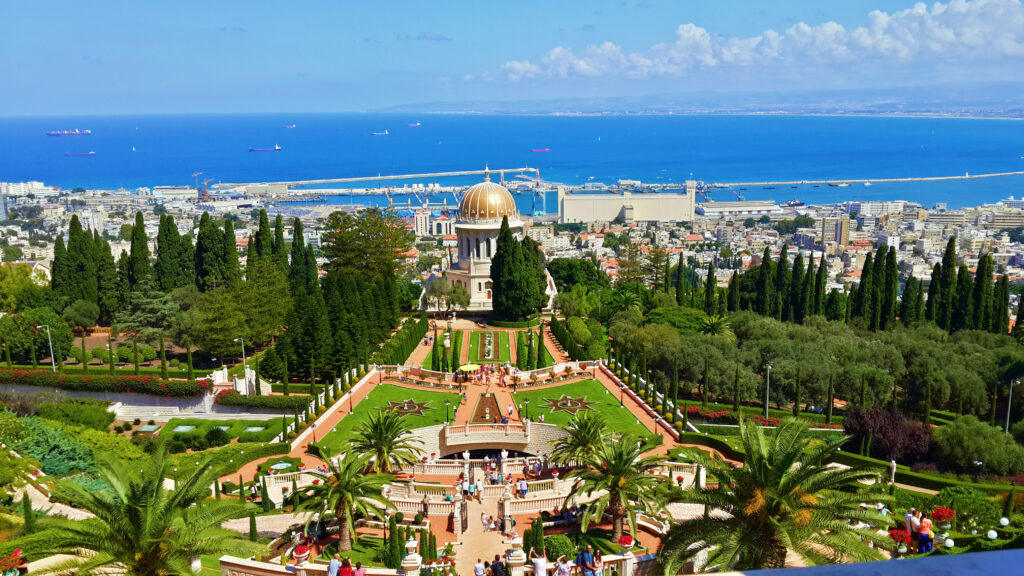


Haifa is a city in the north of Israel, built on the slopes of Mount Carmel, sacred to the 3 Abrahamic religions. The people of Israel call Haifa as Sıkmonah (Black Mulberry). Haifa, which was conquered by the Hebrews, Romans, Arabs, Crusaders and Ottomans, is home to Mount Kermil, which is mentioned in the holy books. On this mountain there is a cave where Elijah the Prophet is believed to have lived and which is considered sacred by Christians and Muslims. Haifa is also the center of the Bahá’í religion. Bahá’íism, a monotheistic religion, was founded in Iran in 1844 by Bahá’u’lláh (Mirza Hussein Ali). Bahá’íism believes that the foundation of all religions is one and that excessive wealth and poverty must be abolished. Bahá’u’lláh, the founder of the Bahá’í religion, was exiled in 1863 to Acre, next to the city of Haifa, then part of the Ottoman Empire. He later lived under supervision until his death in a residence allocated to him.
The most sacred site recognized by the Bahá’ís is the Maqá’u’lláh of Bahá’u’lláh (the tomb of Bahá’u’lláh) in Acre. The second most sacred site is the Maqam of the Báb (the tomb of the Báb) in Haifa. Mirza Muhammad Ali (Bâb Mirzâ) is considered by the Bahá’ís to be the herald of Bahá’u’lláh and also a messenger of God. The Maqam of the Báb is located in the enchanting Bahá’í Gardens.
The Bahá’í Gardens are considered among the most beautiful gardens in the world. Listed as a UNESCO World Heritage Site, the gardens dazzle with their beautiful and well-kept vegetation. The number 19, which is sacred to the Bahá’ís, is also seen in the arrangement of the sets in the gardens. Nine of the gardens in the form of sets are located at the top and nine at the bottom. In the middle of these two groups of sets is the 19th and most magnificent garden. This is also the Maqam of the Bab.
Dome of the Rock
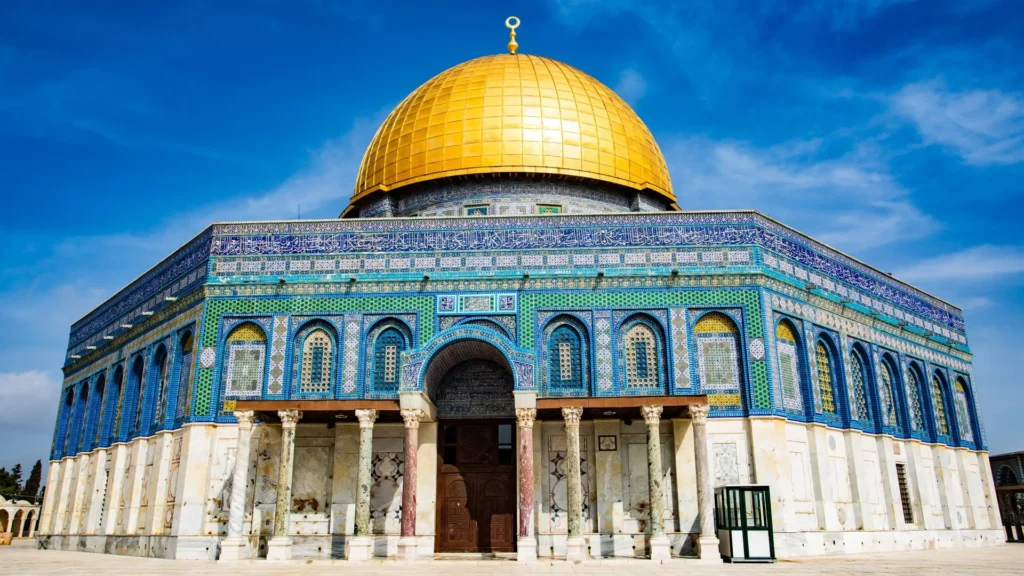


Built on a rock considered sacred by Muslims and Jews, the Dome of the Rock was built during the Umayyad period. Today, this structure, which is very popular among tourists coming to the country, is about 115 meters high. Since this building is located on the same hill as the Al-Aqsa Mosque, you can make a joint plan to see these two religious buildings.
